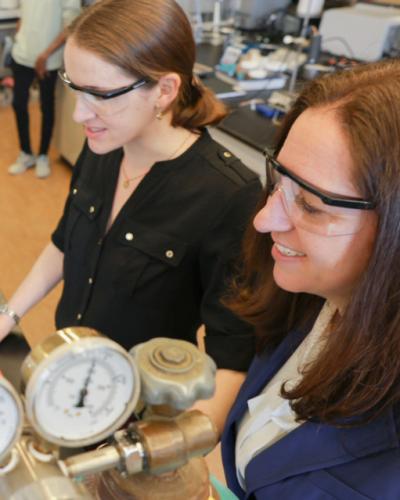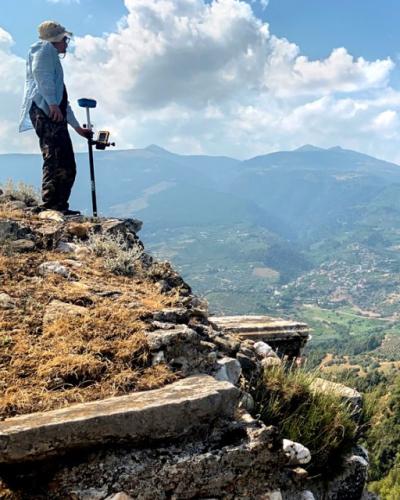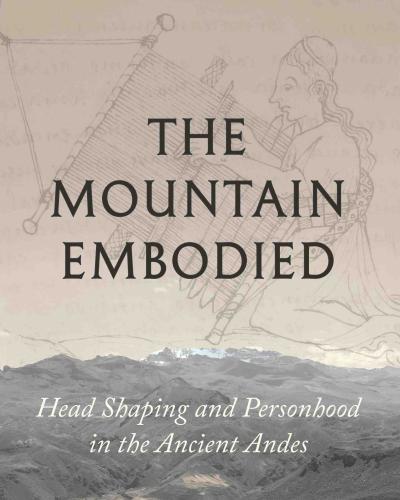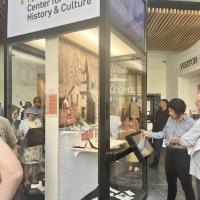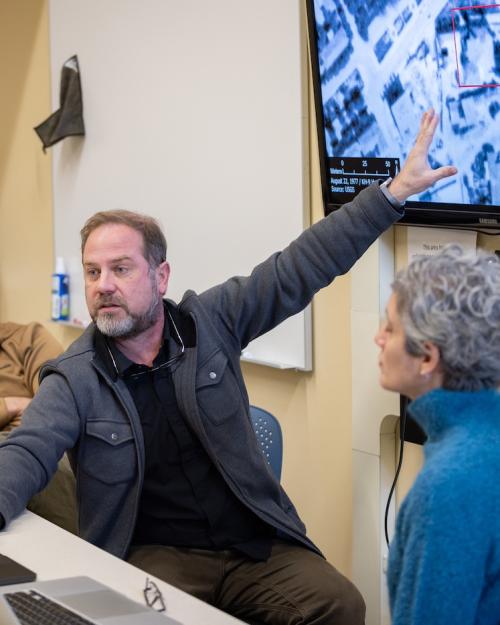As the new Milstein Faculty Fellow in the Milstein Program in Technology & Humanity, Adam T. Smith, a distinguished professor of arts and sciences in anthropology, co-developed a new course this semester exploring how the latest technologies reshape cultural preservation. The students' work in the class has even garnered interest from the U.S. State Department.
Smith and Associate Professor Lori Khatchadourian created ANTHR 3200 Heritage Forensics, which has a class of 20 this spring. It will be offered again in the Fall of 2024. “Heritage forensics requires collaboration,” said Khatchadourian, who will join Smith as a Milstein Faculty Fellow in the next academic year.
Heritage forensics “involves working with complex datasets, advanced spatial technologies, and difficult humanistic questions, and all this cannot be done alone,” Khatchadourian said.
The course highlights major themes from Smith and Khatchadourian’s research in a broader context, examining sites where cultural heritage has been caught up in armed conflicts, from former Yugoslavia to Syria and from China to Ukraine. “The best part of Heritage Forensics is learning from our students,” Smith said. “They come to the class with diverse interests and skills, and they bring that to the projects they undertake…Their research has provided new documentation for known cases of heritage destruction and illuminated cases we did not know well. And the work they are doing could have a real impact in the world. I’ve already had conversations with a contact at the U.S. State Department about interest in the students’ findings.”
Student Ashley Koca ‘25, for example, is a Cultural Heritage Preservation Intern for the Virtual Student Foreign Service (VSFS) program under the U.S. Department of State. Koca said, “My project with VSFS is concerned with creating a StoryMap with ArcGis to highlight and describe cultural heritage preservation efforts across Central and South Asia that were funded by awards from this Bureau. This project is the first of its kind and could not be possible without the skills that I learned through Heritage Forensics.”
Milstein faculty fellows conduct research that examines the intersection of technology and humanity. Smith and Khatchadourian co-direct the research program Caucasus Heritage Watch. This platform monitors and documents endangered and damaged heritage using satellite imagery and open-source media.
Specifically, their research documents cultural destruction in the conflict between Armenia and Azerbaijan. Their work emphasizes the importance of geolocation, earth observing satellite data, and transparency in both documenting the existence of heritage as well as the destruction of irreplaceable historic sites. By meticulously mapping landmarks and regularly monitoring sites using satellite imagery, Caucasus Heritage Watch seeks to document heritage destruction in real-time in the hope of holding perpetrators accountable. At present, the greatest threat is to Armenian heritage in the Nagorno-Karabakh region, which Azerbaijan seized in 2020 and 2023, resulting in the forced displacement of over 100,000 people, virtually almost the entire Armenian population of the region.
Smith and Khatchadourian’s “work in Armenia is continuously inspiring, and it is truly amazing to see their research-reporting develop in real time and in class,” said Koca. “While I did not have the chance to meet Professor Smith before this semester… he has definitely become one of the faculty members I am most influenced by and hope to emulate! It is professors like Professor Smith that make me excited to pursue a career in this field.”
“The Milstein Program is, to my mind, the very model of a Cornell education,” Smith said. “It embraces technology but at every turn asks why these new tools are important, interesting, or useful. It is driven by the priorities of humanistic inquiry but always asks itself how such work can be accomplished most effectively.”
Hannah Mitchell is a communications assistant for the College of Arts and Sciences.

